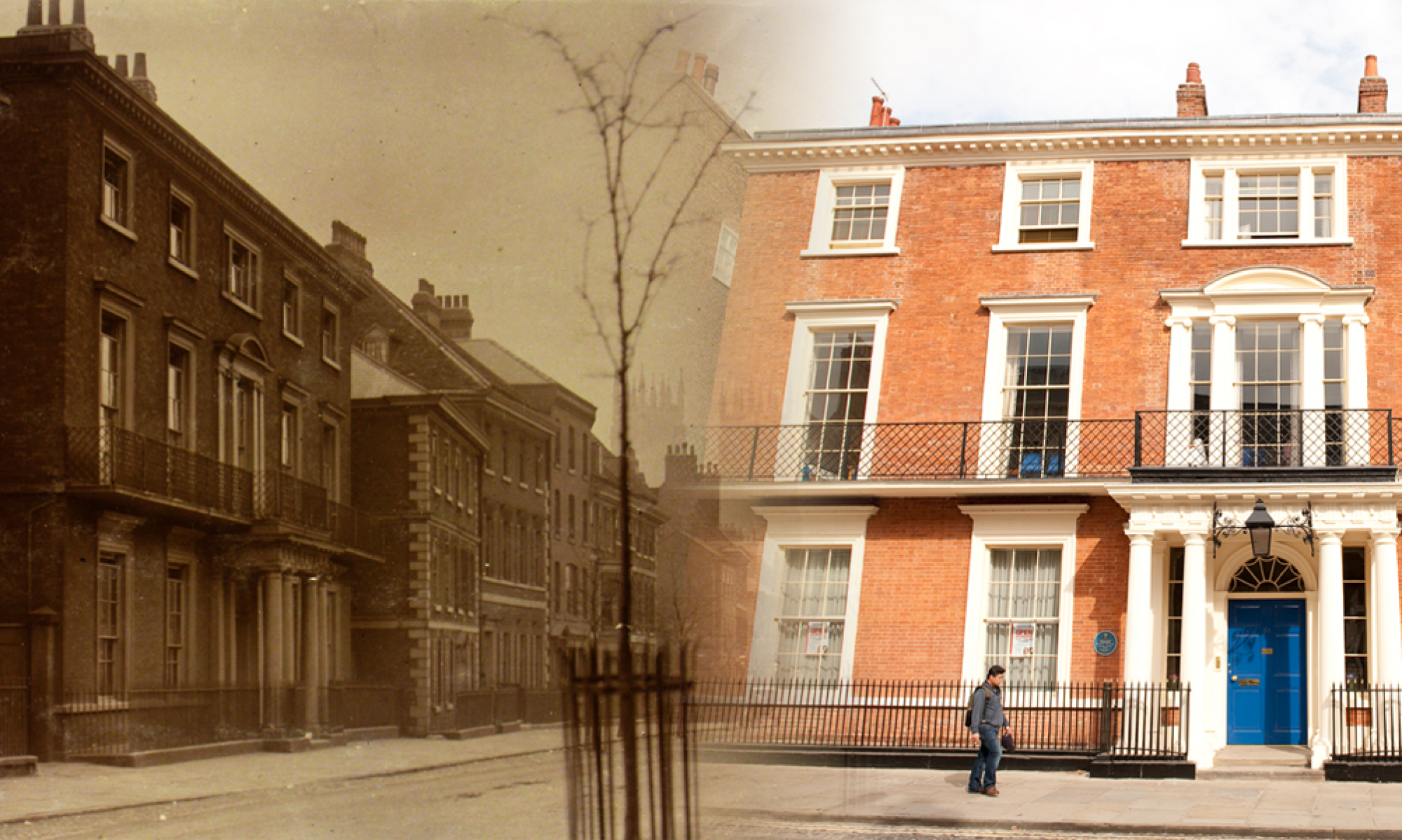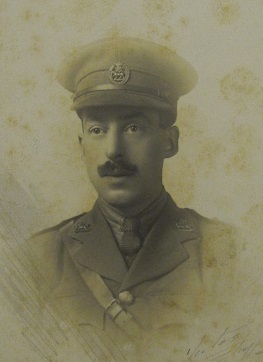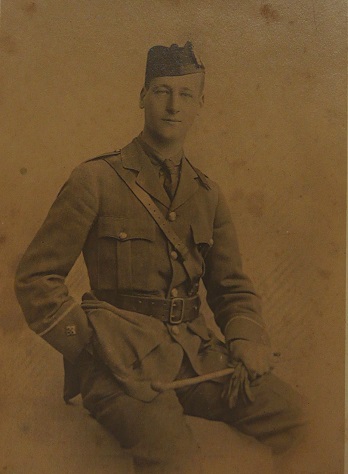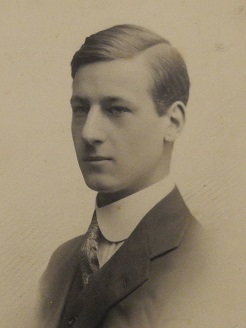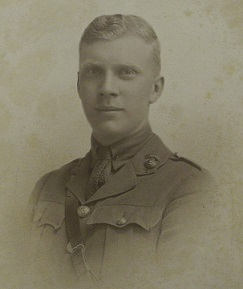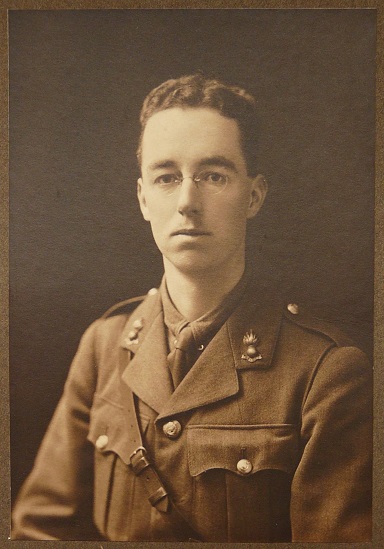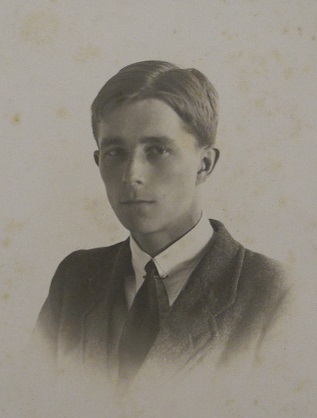
Geoffrey Birdsall, of Scarborough, was injured on 16th June 1918 during enemy artillery bombardment and died, in France, on the 17th June, 1918, aged 19 years.
He was born in 1899 and attended Bootham School from 1913 to 1917. He was a Reeve *. (* equivalent of Prefect)
In his first term at Bootham, Geoffrey won prizes for his Archaeology Diary and a Workshop prize for Bookshelves.
The school magazine, “Bootham”, of December 1915 reports external examination results. Geoffrey achieved passes in Latin and Greek in the University of London, Senior School (Matriculation Standard) examinations.
In the Autumn term of 1915, Geoffrey was a member of the school Senior Reading and Discussion Society.
The July 1916 issue of “Bootham “ reports on the school’s Bedroom Football Tournament.
“Birdsall played a fine plucky game in goal for XIII.”
The October 1916 issue of “Bootham” reports external examination results:
“Oxford and Cambridge Schools Examination Board,
Higher Certificate Examination.
(Latin, Greek, Elementary Mathematics, and History.)
G. Birdsall.”
“Bootham”, issue of March 1917, contains the Eighty-Third Annual Report of Bootham School, York Natural History, Literary & Polytechnic Society January, 1917. The report of the Senior Essay Society includes the following:
“During the Session 1915-16 the Committee awarded the first prize to G. Birdsall for a very clearly written essay entitled “The Fall of Jerusalem.””
and
“G. Birdsall’s essay on Modern Education was quite a feature of one meeting, and gave rise to considerable discussion.”
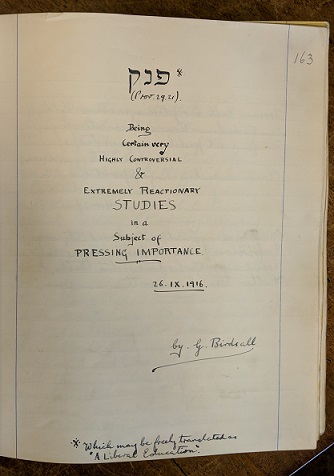
The same issue contains a report on the Senior Reading and Discussion Society:
“A debate on the “House System” was held some time later, G. Birdsall moving the resolution that ” The House System as at present obtaining at Bootham School ought to be abolished. ” O. B. Lean moved an opposing motion. The resolution won by 18 votes to 9.”
“Bootham” of June 1917 tells us that Geoffrey came third in the 440 Yards race in the school Athletics Tournament.
The report on the school Summer Term of 1917, in “Bootham” issue of December 1917, contains the following:
“Some weeks later the Society met at the Master’s table for breakfast, this taking the place of the strawberry tea in the garden in days of peace, though the strawberries themselves were as good as ever. Mr. Rowntree announced that G. Birdsall’s Essay, entitled ” More Wailing, ” had taken first prize for the year.”
This issue also includes external examination results for midsummer 1917:
“North Riding County Council Major Scholarship.
(£6o a year for three years.)
G. Birdsall (Classics).”
and his “Bene Decessit” entry:
“G. BIRDSALL was a prominent member of the committees of the Senior Essay and Debating Societies. He was a keen debater and brilliant essayist. He obtained the Senior School Certificate two years ago and the Oxford and Cambridge Higher Certificate the following year. During his last year he was a reeve and won a Major Scholarship of the North Riding County Council in Classics. He leaves us to join the Artists’ Rifles O.T.C.”
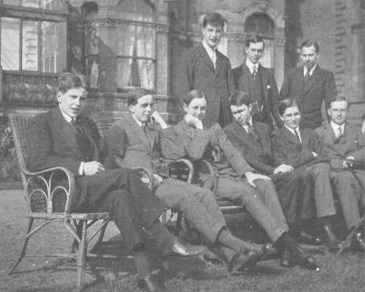
His scholarship was celebrated in school by a half-holiday in the Autumn term.
The May 1918 issue of “Bootham” contains Old York Scholars War-time Service Lists. Under “Old York Scholars serving in the Navy and Army” we see:
“Birdsall, G., London Regt.”
Then in the July 1918 issue we read, under “Deaths”:
“BIRDSALL.—On the 17th June, 1918, killed in action in France, Geoffrey Birdsall (1913-17), aged 19.”
and his “In Memoriam” entry:
“GEOFFREY BIRDSALL (1913-17) fell on June 17th. ” His loss is felt as a heavy blow in the School; he is the second Old Boy to fall within a year of leaving School. Two letters lie before me; one looking forward to Whitsuntide, the other written after he had received the postcard. He writes in customary vein. He has no news to give, he sits in a shallow chalk depression, he writes in the front line with nothing between himself and Fritz. He would give anything to be with us on Whit-Monday: ‘ anyhow, I shall be thinking of the old School.’ The postmark of the second letter is June 13th; he speaks of heartfelt pleasure and gratitude on receiving the postcard with its load of well-known signatures. ‘ The only thing that could ever assure me that I really used to wander in the Academic groves of the Senior Essay Society is the characteristically bold, large signature of R. B. Braithwaite, though I am quite sure that I should no longer be able to engage in debate with a member of the Leighton Park Staff. I should very much like personally to thank everyone who signed my postcard, but I am afraid that it is impossible. I hope that we shall soon have the war well over, and that better times are in store for us.’ So this fine-natured boy departed, leaving us the memory of his strong soul, his intellectual force, his loyal spirit.””
Private Geoffrey Birdsall is buried in Pernois British Cemetery, Somme, France. The inscription reads: “OF SCARBORO’ AGED 19 MEMBRA SUMUS CORPORIS MAGNI”.
